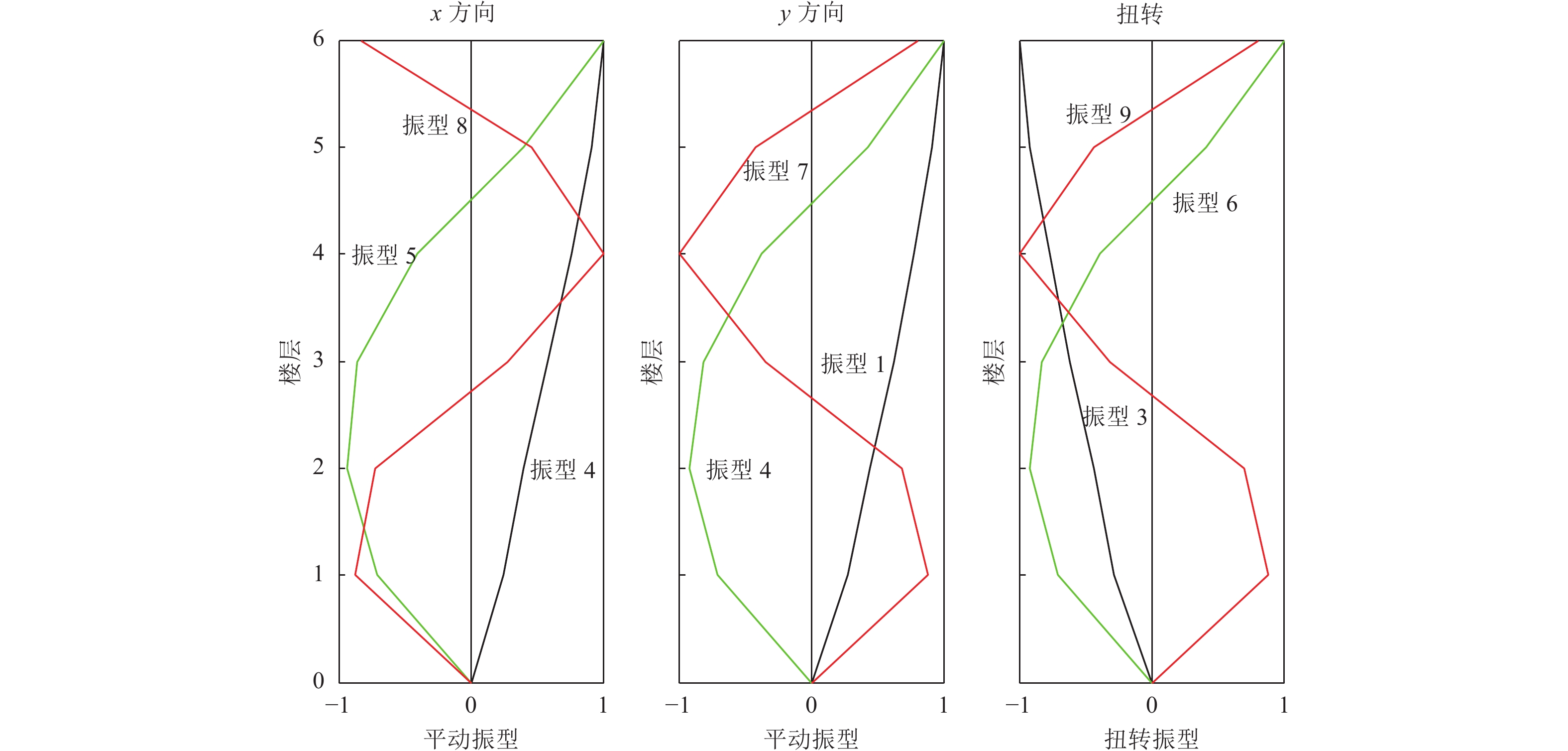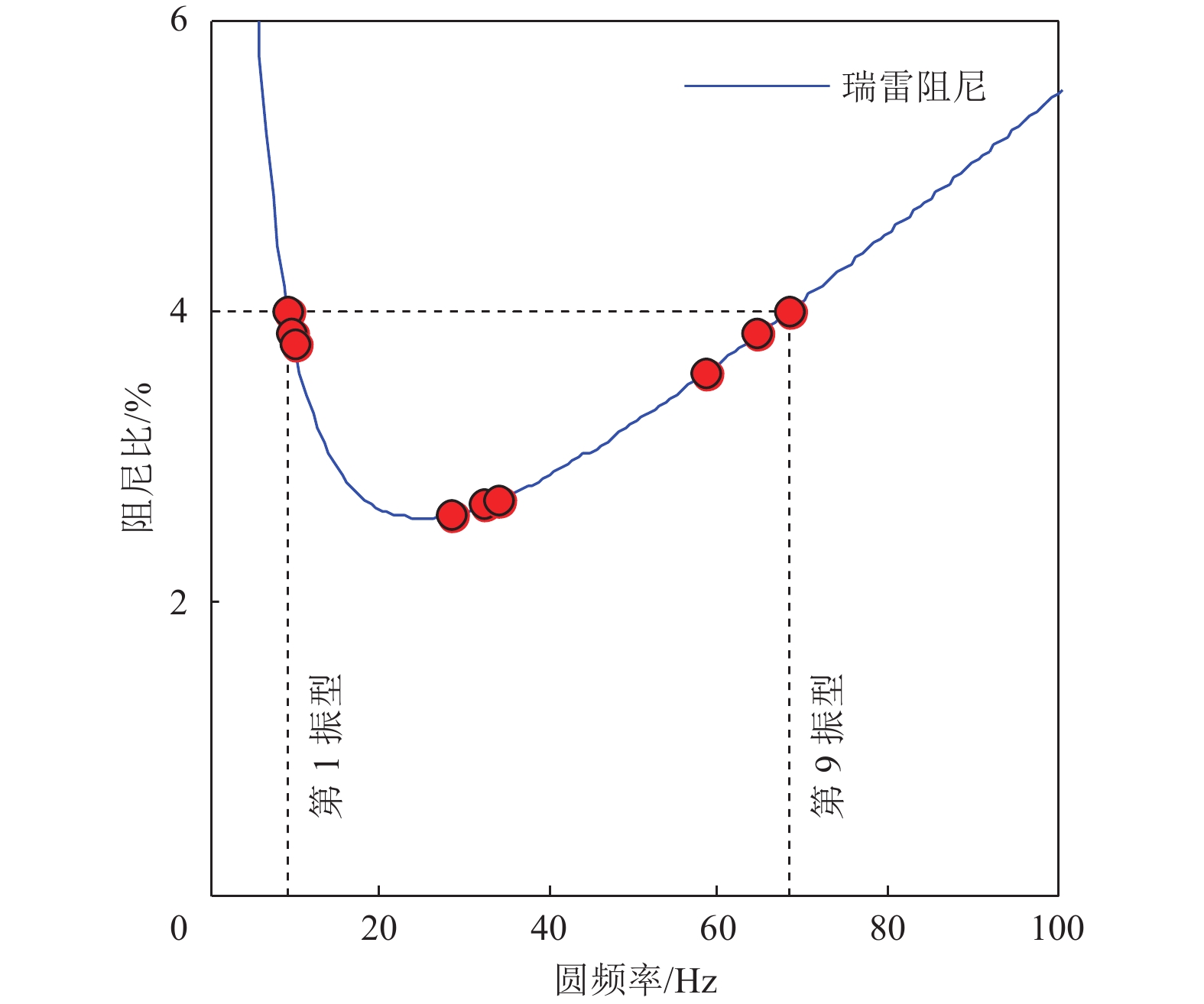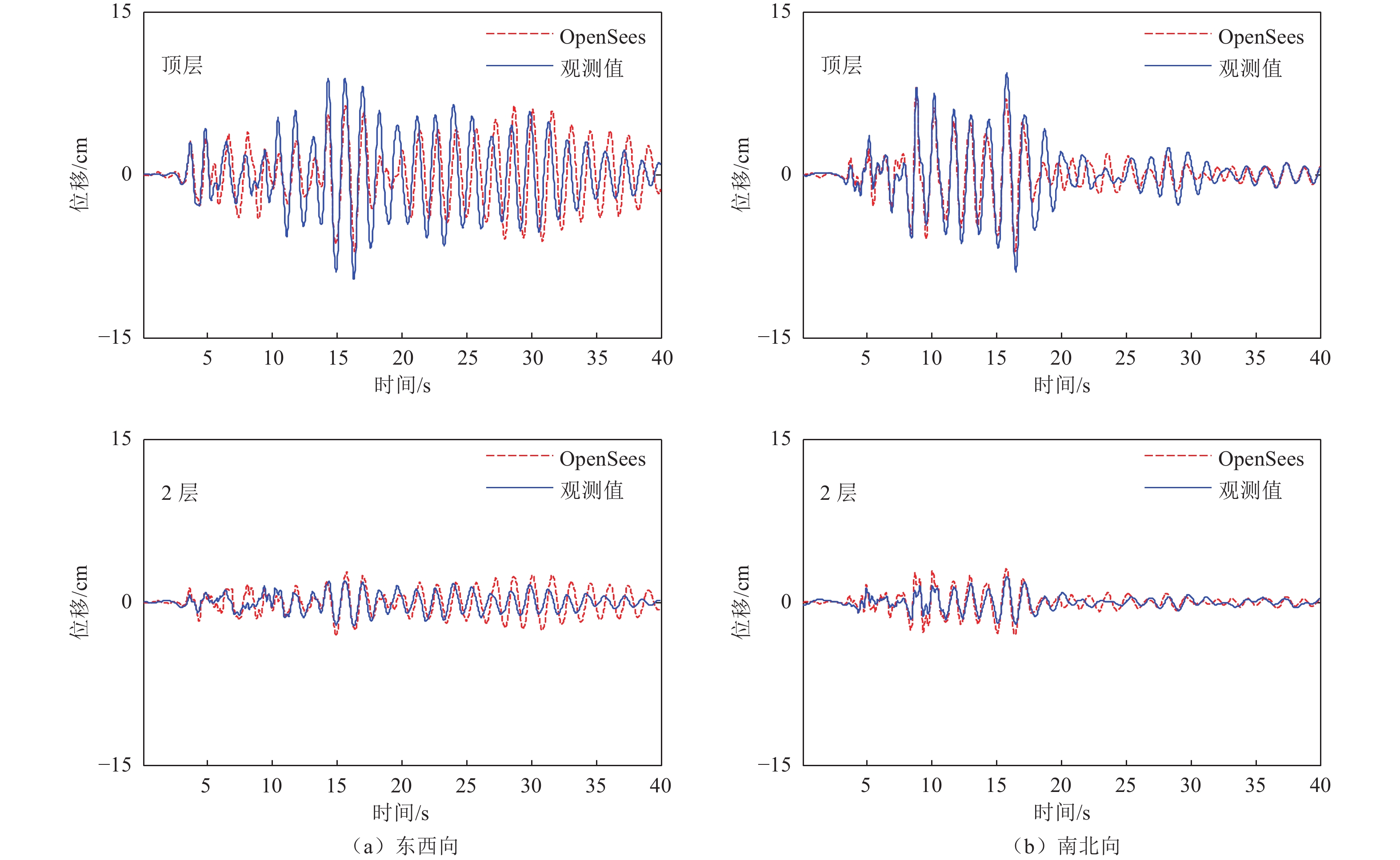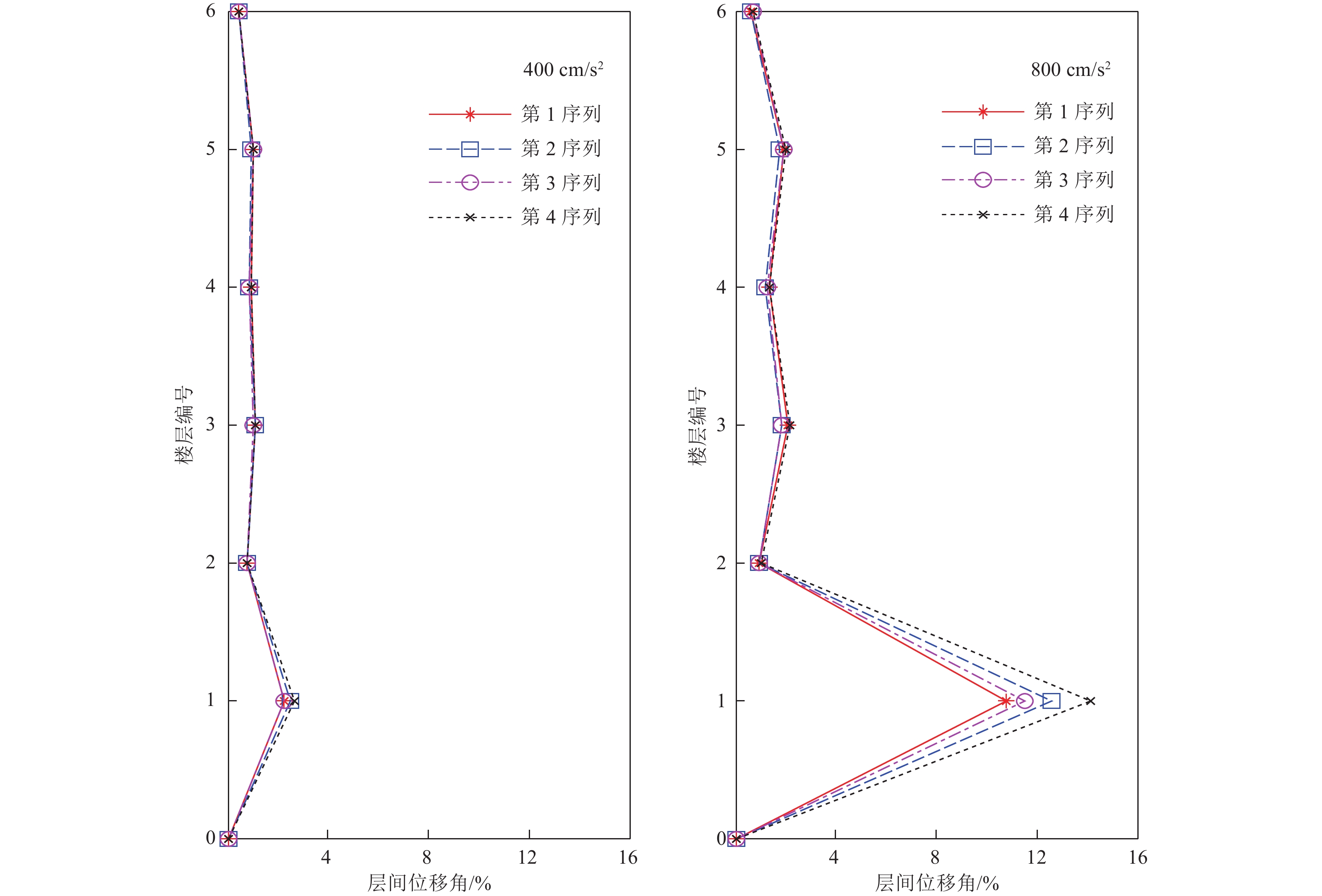Influence of PGV and PGD on Structural Nonlinear Seismic Response of A 6-story Steel Building
-
摘要: 深入揭示地震动峰值特性影响是推进地震动工程特性研究的有效手段。地震动峰值速度和峰值位移特性对结构弹塑性地震反应的影响规律尚需要探索。本文基于窄带时程叠加方法,人工合成具有相同加速度反应谱但峰值速度和峰值位移不同的4个序列地震动时程。其中第1、2序列地震动峰值速度为0.20 m/s,峰值位移分别为0.20 dm和0.40 dm,而第3、4序列地震动峰值位移为0.30 dm,峰值速度分别为0.15 m/s和0.30 m/s。将地震动峰值加速度分别标定至400 cm/s2和800 cm/s2,并以此作为输入开展建设地震观测系统的6层钢结构弹塑性地震反应分析,使得结构发生不同弹塑性地震反应,对比分析在不同序列地震动作用下层间位移角和延性系数等结构工程需求参数差别,探索峰值位移和峰值速度对结构弹塑性地震反应的影响规律。分析表明,在非线性反应阶段后,结构层间位移角和延性系数的变异系数随着输入地震动峰值的增加而增大,地震动峰值特性对结构层间位移角和延性系数等参数有一定影响,影响幅度随输入地震动增加而增大,且峰值速度较峰值位移的影响更为显著。在进行结构设计地震动参数选取时,应重视地震动速度和位移峰值特性的影响。Abstract: Revealing the influences of amplitude of strong motions is an effective method to push forward the earthquake engineering research. Influence pattern to structural inelastic response of the peak velocity and peak displacement is required to carry out. Based on a specific acceleration response spectrum, 4 sets of artificial ground motions are synthesized with 30 samples. The peak accelerations of the 1st and 2nd sets are identical with value of 1 m/s2 and their peak velocities are similarly the same with the value of 0.20 m/s. Their peak displacements differ from each other, with the values at 0.2 dm for the 1st set and 0.4 dm for the 2nd set. The peak accelerations and peak displacements are consistent with the peak velocity of 0.15 m/s for the 3rd set and 0.30 m/s for the 4th set. The ground motions are separately scaled to 400cm/s2 and 800cm/s2 and they are introduced as the input motions to a 6-story steel building to render certain different degree of non-linear seismic response. Engineering demand parameters including inter-story drift ratio and ductility coefficient are compared for the response under different sets of ground motions. It is inferred from the comparsions that the influence appears a tendency to increase with the amplitude of input ground motions. Analyses also indicate peak velocities have large influences on nonlinear responses and the influence of peak displacement is relatively weaker. Therefore, when ground motions are selected for structural seismic design, it is not appropriate to merely consider spectral characteristics, ignoring the influence of amplitude characteristics.
-
表 1 人造地震动特征
Table 1. The characteristics of peak values of artificial ground motion
合成地震动
序列峰值加速度
PGA/ (m·s−2)峰值速度
PGV/(m·s−1)峰值位移
PGD/dm第1序列 1.0 0.20 0.20 第2序列 1.0 0.20 0.40 第3序列 1.0 0.15 0.30 第4序列 1.0 0.30 0.30 表 2 结构梁柱截面配置表
Table 2. Section configuration of the beams and columns
楼层 梁截面 柱截面 6 W24×68 W14×90 5 W24×84 W14×90 3~4 W24×84 W14×132 2 W27×102 W14×176 1 W30×116 W14×176 表 3 楼层加速度反应统计
Table 3. Amplitude statistics of floor acceleration response
楼层 加速度/(cm·s−2) 东西向 南北向 顶层 270.7 441.1 2 195.2 279.8 1 208.6 293.0 表 4 结构自振频率对比分析
Table 4. Comparative analysis of natural frequency of the building
振型
编号振型
特性系统识别
频率/HzOpenSees计算
频率/Hz1 y方向 1.462 1.456 2 x方向 1.557 1.537 3 扭转 1.679 1.574 4 y方向 4.556 4.531 5 x方向 5.502 5.177 6 扭转 5.475 5.459 7 y方向 9.319 9.312 8 x方向 10.281 10.277 9 扭转 10.976 10.868 -
陈健云, 李静, 周晶等, 2003. 地震动频谱对小湾拱坝非线性响应的影响. 振动工程学报, 16(2): 207—211Chen J. Y. , Li J. , Zhou J. , et al. , 2003. Effects of time-frequency joint non-stationariness on the response of arch dam. Journal of Vibration Engineering, 16(2): 207—211. (in Chinese) 杜修力, 王福源, 王进廷等, 2015. 地震动峰值位移对高拱坝地震反应的影响. 水力发电学报, 34(11): 134—142Du X. L. , Wang F. Y. , Wang J. T. , et al. , 2015. Effect of peak ground displacement on seismic responses of high arch dam. Journal of Hydroelectric Engineering, 34(11): 134—142. (in Chinese) 杜修力, 许紫刚, 袁雪纯等, 2018. 地震动峰值位移和峰值速度对地下结构地震反应的影响. 震灾防御技术, 13(2): 293—303Du X. L. , Xu Z. G. , Yuan X. C. , et al. , 2018. Influence of peak ground displacement and peak ground velocity of ground motion on dynamic response of underground structures. Technology for Earthquake Disaster Prevention, 13(2): 293—303. (in Chinese) 郝明辉, 王珊, 张郁山, 2016. 峰值速度对单自由度体系地震反应的影响分析. 地震工程与工程振动, 36(6): 120—132Hao M. H. , Wang S. , Zhng Y. S. , 2016. Influence of ground-motion peak velocity on non-linear dynamic response of single-degree-of-freedom system. Earthquake Engineering and Engineering Vibration, 36(6): 120—132. (in Chinese) 贺秋梅, 2012. 地震动的速度脉冲对结构反应及结构减隔震性能影响研究. 北京: 中国地震局地球物理研究所.He Q. M. , 2012. Study on the influence of seismic velocity pulse on structural response and isolation properties. Beijing: Institute of Geophysics, China Earthquake Administration. (in Chinese) 胡良明, 朱军福, 孙奔博, 2019. 地震动峰值速度与峰值加速度对重力坝动力响应影响. 水力发电, 45(7): 66—71Hu L. M. , Zhu J. F. , Sun B. B. , 2019. Influence of peak velocity and peak acceleration of seismic ground motion on dynamic response of gravity dam. Water Power, 45(7): 66—71. (in Chinese) 胡聿贤, 2006. 地震工程学. 2版. 北京: 地震出版社.Hu Y. X. , 2006. Earthquake engineering. 2 nd ed. Beijing: Seismological Press. (in Chinese) 李新乐, 朱晞, 2004. 近断层地震速度脉冲效应对桥墩地震反应的影响. 北方交通大学学报, 28(1): 11—16Li X. L. , Zhu X. , 2004. Velocity pulse for near-fault ground motions and its effect on seismic response of pier. Journal of Northern Jiaotong University, 28(1): 11—16. (in Chinese) 陆新征, 叶列平, 缪志伟, 2009. 建筑抗震弹塑性分析——原理、模型与在ABAQUS, MSC. MARC和SAP2000上的实践. 北京: 中国建筑工业出版社.Lu X. Z. , Ye L. P. , Miao Z. W. , 2009. Elasto-plastic analysis of buildings against earthquake: theory, model and implementation on ABAQUS, MSC. MARC and SAP2000. Beijing: China Architecture & Building Press. (in Chinese) 任志林, 2004. 震害预测中结构地震破坏指数的不确定性研究. 北京: 中国地震局地球物理研究所. 孙忠贤, 2009. 地震动特性对结构地震反应的影响分析. 哈尔滨: 中国地震局工程力学研究所.Sun Z. X. , 2009. The influence of ground motion characteristics on response of structures. Harbin: Institute of Engineering Mechanics, China Earthquake Administration. (in Chinese) 王彬, 李文艺, 2000. 合成地震动方法用于研究强地震动长周期特性的探讨. 地震研究, 23(1): 44—50Wang B. , Li W. Y. , 2000. Study on the character of long period for strong earthquake ground motion using methods of synthetic earthquake ground motion. Journal of Seismological Research, 23(1): 44—50. (in Chinese) 王飞, Reza S. , 2016. 基于振动台实验的结构损伤识别研究. 地震工程学报, 38(1): 129—135Wang F. , Reza S. , 2016. Structural damage Identification based on shaking table tests. China Earthquake Engineering Journal, 38(1): 129—135. (in Chinese) 王国新, 李宏男, 赵真等, 2008. 结构动力反应分析中的地震动输入问题研究. 沈阳建筑大学学报(自然科学版), 24(6): 993—998Wang G. X. , Li H. N. , Zhao Z. , et al. , 2008. Study on ground motion input for structural dynamic analysis. Journal of Shenyang Jianzhu University (Natural Science), 24(6): 993—998. (in Chinese) 韦韬, 2005. 近断层速度脉冲对钢筋混凝土框架结构影响的研究. 北京: 中国地震局地球物理研究所.Wei T. , 2005. Study on effects of near-fault velocity pulse on RC framed structures. Beijing: Institute of Geophysics, China Earthquake Administration. (in Chinese) 杨溥, 李英民, 赖明, 2000. 结构时程分析法输入地震波的选择控制指标. 土木工程学报, 33(6): 33—37Yang P. , Li Y. M. , Lai M. , 2000. A new method for selecting inputting waves for time-history analysis. China Civil Engineering Journal, 33(6): 33—37. (in Chinese) 尤红兵, 张郁山, 赵凤新, 2011. 地震动峰值速度对地下隧洞内力的影响研究. 震灾防御技术, 6(2): 105—115You H. B. , Zhang Y. S. , Zhao F. X. , 2011. Influence of peak ground velocity on the internal force of underground tunnel. Technology for Earthquake Disaster Prevention, 6(2): 105—115. (in Chinese) 张斌, 俞言祥, 李小军等, 2021. 西南地区水平向峰值速度、峰值位移衰减关系研究. 地球物理学报, 64(8): 2733—3748.Zhang B. , Yu Y. X. , Li X. J. , et al. , 2021. Ground motion attenuation relationship of horizontal component of PGV and PGD in Southwest China. Chinese Journal of Geophysics, 64(8): 2733—2748. (in Chinese) 张新培, 2003. 钢筋混凝土抗震结构非线性分析. 北京: 科学出版社. 张郁山, 赵凤新, 2011. 地震动峰值位移对单自由度体系非线性动力反应的影响. 工程力学, 28(1): 55—64Zhang Y. S. , Zhao F. X. , 2011. Influence of ground-motion peak displacement on non-linear dynamic response of single-degree-of-freedom system. Engineering Mechanics, 28(1): 55—64. (in Chinese) 赵凤新, 张郁山, 2006. 拟合峰值速度与目标反应谱的人造地震动. 地震学报, 28(4): 429—437Zhao F. X. , Zhang Y. S. , 2006. Artificial ground motion compatible with specified peak velocity and target spectrum. Acta Seismologica Sinica, 28(4): 429—437. (in Chinese) 赵凤新, 韦韬, 张郁山, 2008. 近断层速度脉冲对钢筋混凝土框架结构地震反应的影响. 工程力学, 25(10): 180—186, 193Zhao F. X. , Wei T. , Zhang Y. S. , 2008. Influence of near-fault velocity pulse on the seismic response of reinforced concrete frame. Engineering Mechanics, 25(10): 180—186, 193. (in Chinese) 中华人民共和国住房和城乡建设部, 中华人民共和国国家质量监督检验检疫总局, 2010. GB 50011—2010 建筑抗震设计规范. 北京: 中国建筑工业出版社.Ministry of Housing and Urban-Rural Development of the People's Republic of China, General Administration of Quality Supervision, Inspection and Quarantine of the People's Republic of China, 2010. GB 50011—2010 Code for seismic design of buildings. Beijing: China Architecture & Building Press. (in Chinese) 周媛, 2006. 地震动速度与位移对大跨斜拉桥地震反应影响的研究. 北京: 中国地震局地球物理研究所.Zhou Y. , 2006. Study on effects of ground velocity and ground displacement on seismic responses of long span cable-stayed bridge. Beijing: Institute of Geophysics, China Earthquake Administration. (in Chinese) Alavi B., Krawinkler H., 2000. Consideration of near-fault ground motion effects in seismic design. In: 12 th World Conference on Earthquake Engineering. Auckland: WCEE. Alavi B. , Krawinkler H. , 2004. Behavior of moment-resisting frame structures subjected to near-fault ground motions. Earthquake Engineering & Structural Dynamics, 33(6): 687—706. Anderson J. C. , Bertero V. V. , 1987. Uncertainties in establishing design earthquakes. Journal of Structural Engineering, 113(8): 1709—1724. doi: 10.1061/(ASCE)0733-9445(1987)113:8(1709) Ayan A. K., Boduroglu H., 2004. Strengthening of existing reinforced concrete buildings and near fault effects. In: 13 th World Conference on Earthquake Engineering. Vancouver: WCEE. Bertero V. V. , Mahin S. A. , Herrera R. A. , 1978. Aseismic design implications of near-fault San Fernando earthquake records. Earthquake Engineering & Structural Dynamics, 6(1): 31—42. Chopra A. K., 2001. Dynamics of structures: theory and applications to earthquake engineering. 2 nd ed. Upper Saddle River: Prentice Hall. Ghobarah A., 2004. Response of structures to near-fault ground motion. In: 13 th World Conference on Earthquake Engineering. Vancouver: WCEE. Hall J. F. , Heaton T. H. , Halling M. W. , et al. , 1995. Near-source ground motion and its effects on flexible buildings. Earthquake Spectra, 11(4): 569—605. doi: 10.1193/1.1585828 Hall J. F. , Ryan K. L. , 2000. Isolated buildings and the 1997 UBC near-source factors. Earthquake Spectra, 16(2): 393—411. doi: 10.1193/1.1586118 Jangid R. S. , Kelly J. M. , 2001. Base isolation for near-fault motions. Earthquake Engineering & Structural Dynamics, 30(5): 691—707. Katsanos E. I. , Sextos A. G. , Manolis G. D. , 2010. Selection of earthquake ground motion records: a state-of-the-art review from a structural engineering perspective. Soil Dynamics and Earthquake Engineering, 30(4): 157—169. doi: 10.1016/j.soildyn.2009.10.005 Kunnath S. K. , Nghiem Q. , El-Tawil S. , 2004. Modeling and response prediction in performance-based seismic evaluation: case studies of instrumented steel moment-frame buildings. Earthquake Spectra, 20(3): 883—915. doi: 10.1193/1.1774181 Kunnath S. K., Kalkan E., 2005. IDA capacity curves: the need for alternative intensity factors. In: Proceedings of the American Society of Civil Engineers, Structures Congress. New York: American Society of Civil Engineers, 1—9. Makris N. , Chang S. P. , 2000. Effect of viscous, viscoplastic and friction damping on the response of seismic isolated structures. Earthquake Engineering & Structural Dynamics, 29(1): 85—107. Mavroeidis G. P. , Dong G. , Papageorgiou A. S. , 2004. Near-fault ground motions, and the response of elastic and inelastic single-degree-of-freedom (SDOF) systems. Earthquake Engineering & Structural Dynamics, 33(9): 1023—1049. Reitherman R. , 1985. A review of earthquake damage estimation methods. Earthquake Spectra, 1(4): 805—847. doi: 10.1193/1.1585293 Sasani M., Bertero V. V., 2000. Importance of severe pulse-type ground motions in performance-based engineering: historical and critical review. In: 12 th World Conference on Earthquake Engineering. Auckland: WCEE. Seneviratna G. D. P. K., Krawinkler H., 1997. Evaluation of inelastic MDOF effects for seismic design. Stanford: John A. Blume Earthquake Engineering Center. Shakal A., Huang M., Darragh R., et al., 1994. CSMIP strong-motion records from the Northridge, California earthquake of 17 January 1994. Sacramento: California Office of Strong-Motion Studies. Sordo E. , Terán A. , Guerrero J. J. , et al. , 1989. The Mexico earthquake of September 19, 1985—ductility and resistance requirements imposed on a concrete building. Earthquake Spectra, 5(1): 41—50. doi: 10.1193/1.1585510 Stephens J. E. , Yao J. T. P. , 1987. Damage assessment using response measurement. Journal of Structural Engineering, 113(4): 787—801. doi: 10.1061/(ASCE)0733-9445(1987)113:4(787) Wang J. J. , Fan L. C. , Qian S. E. , et al. , 2002. Simulations of non-stationary frequency content and its importance to seismic assessment of structures. Earthquake Engineering & Structural Dynamics, 31(4): 993—1005. -



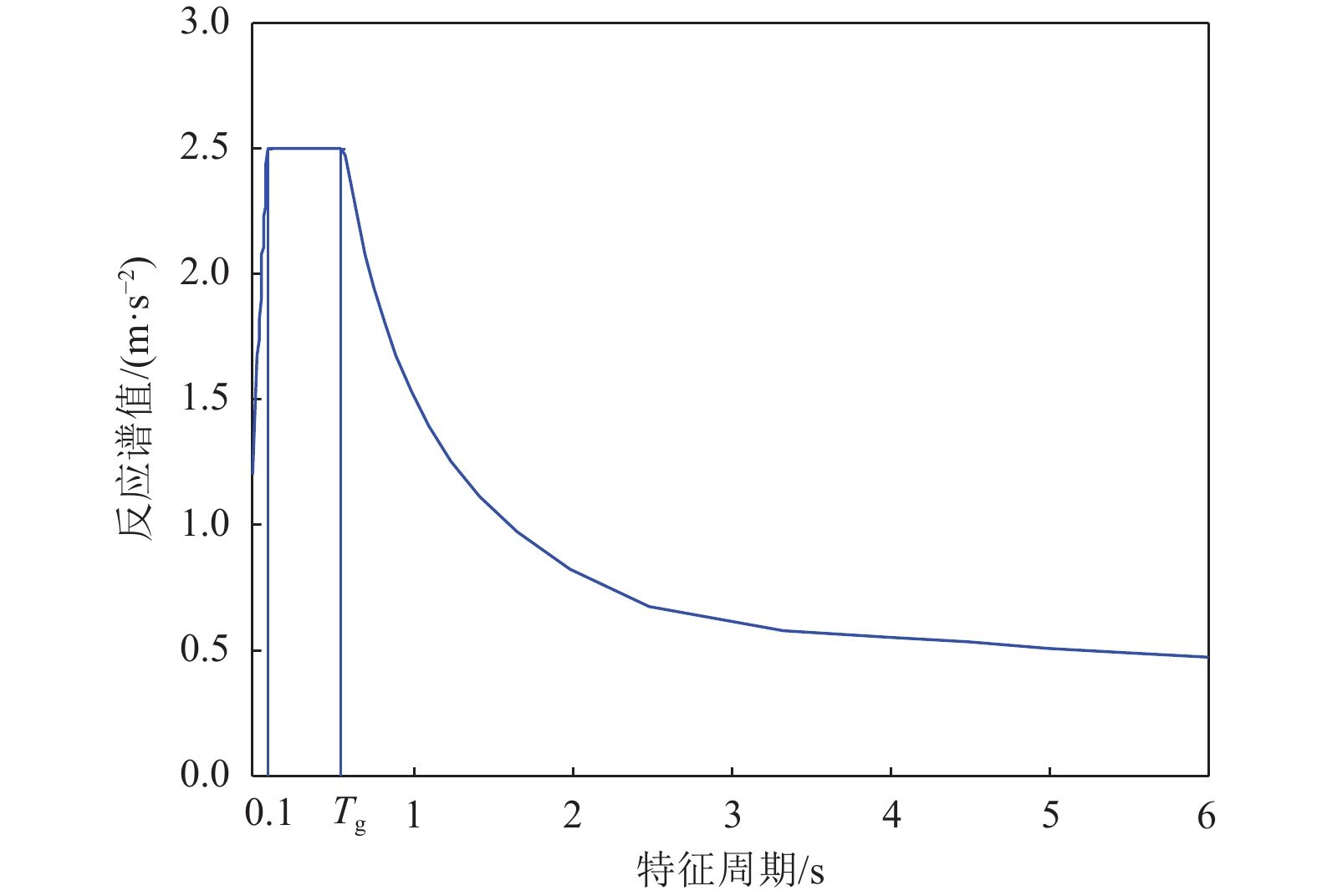
 下载:
下载:


